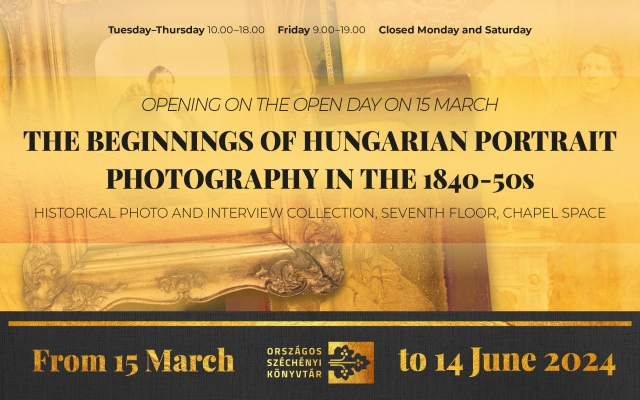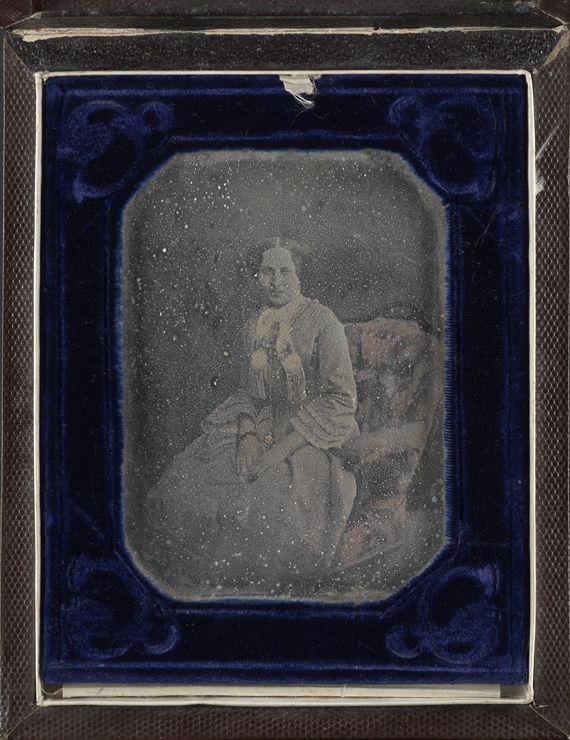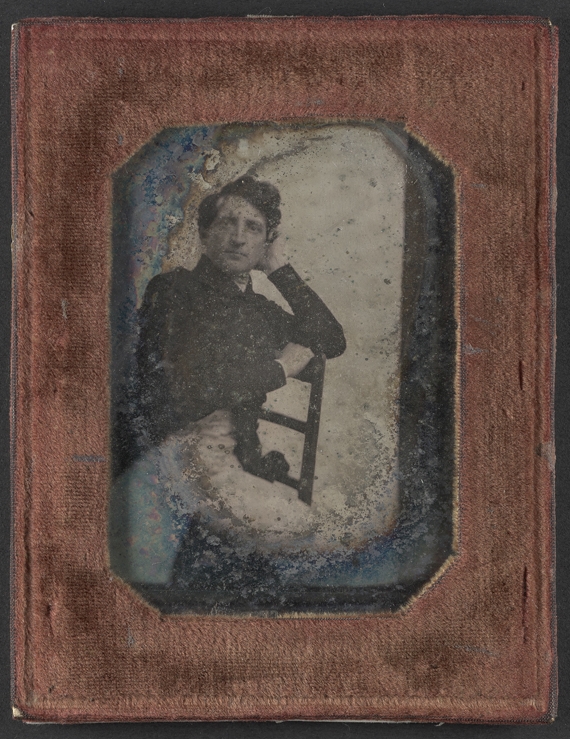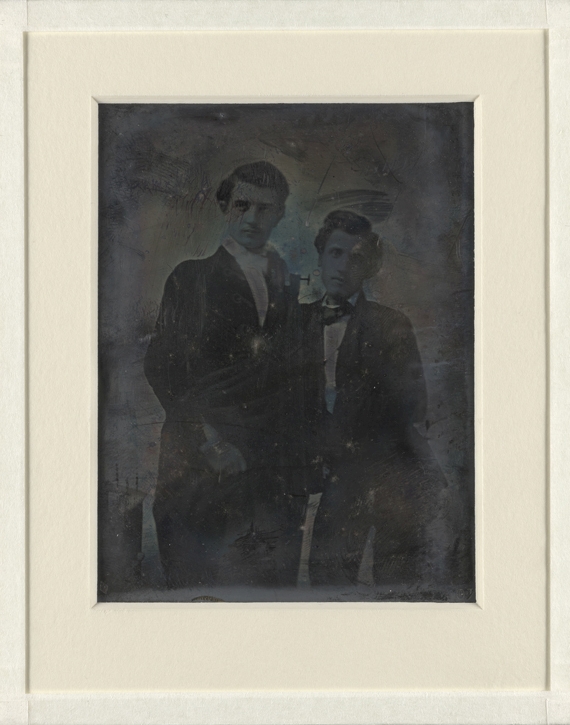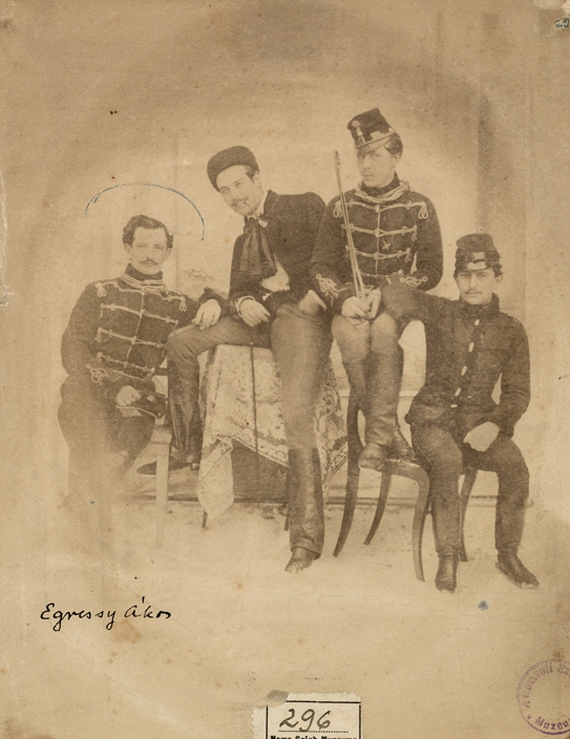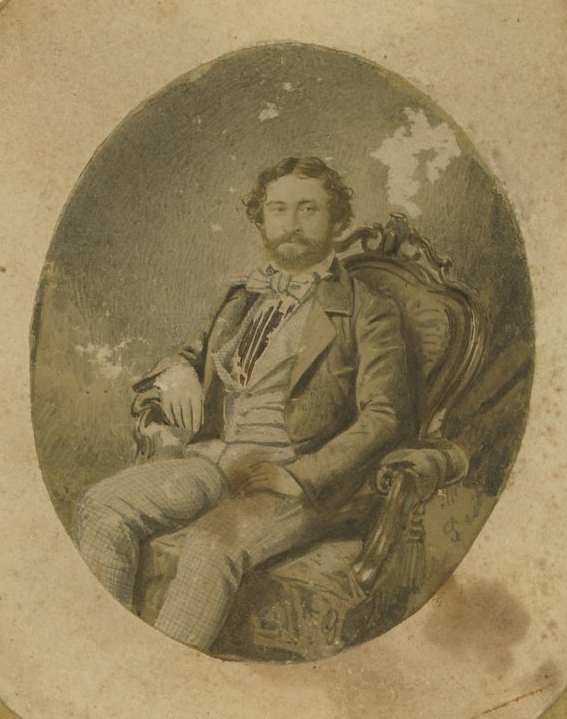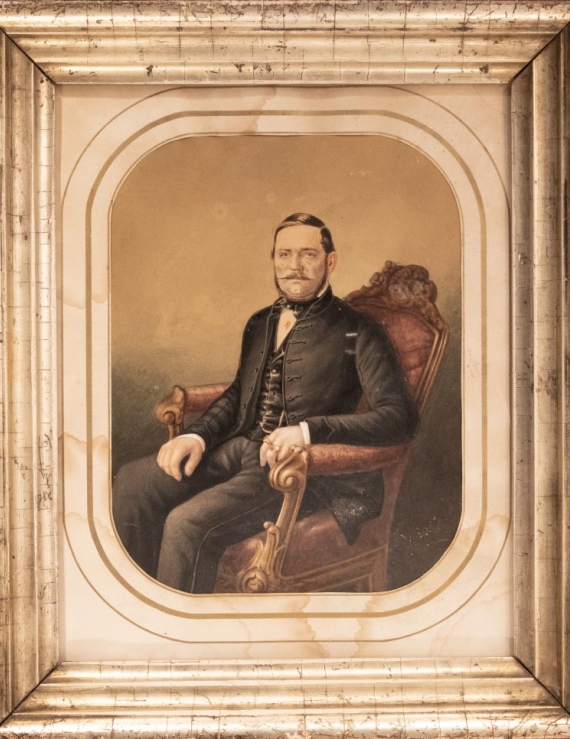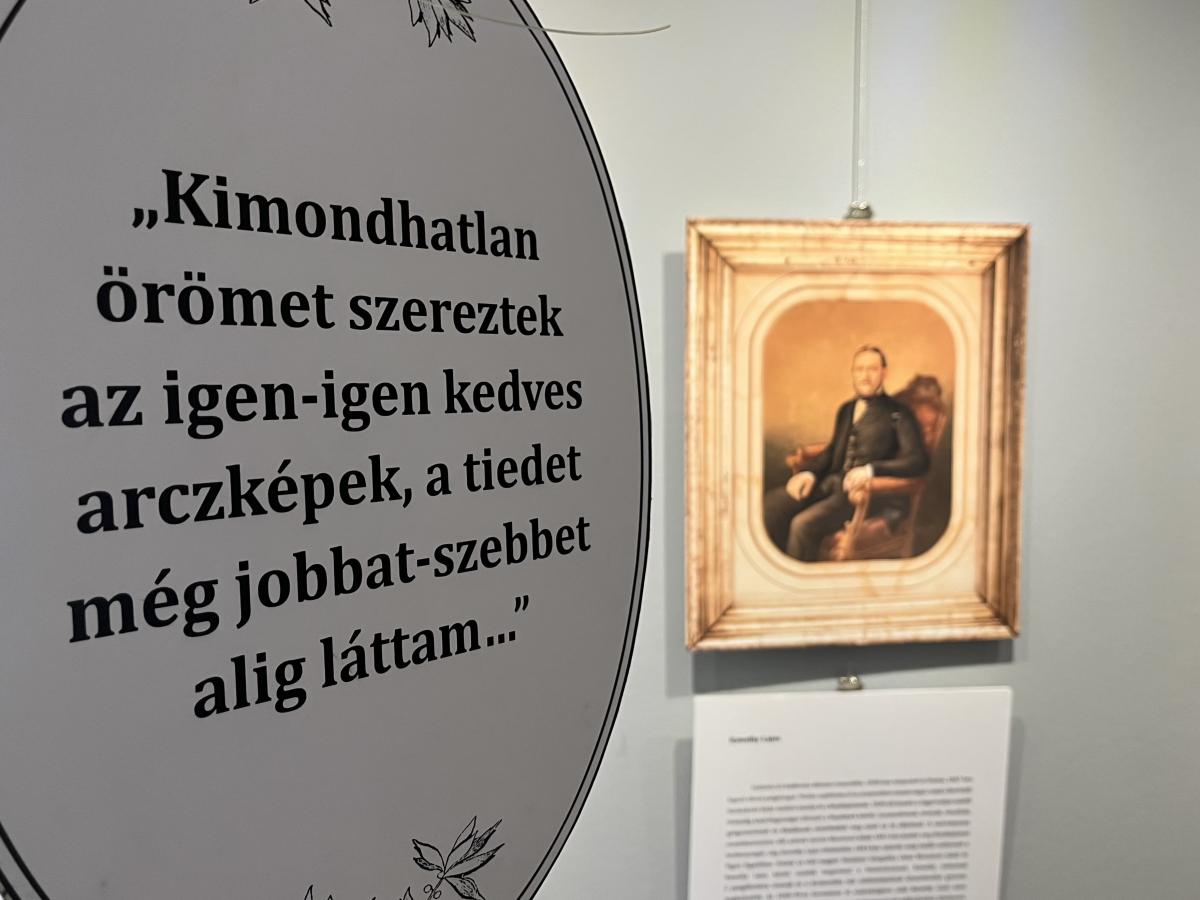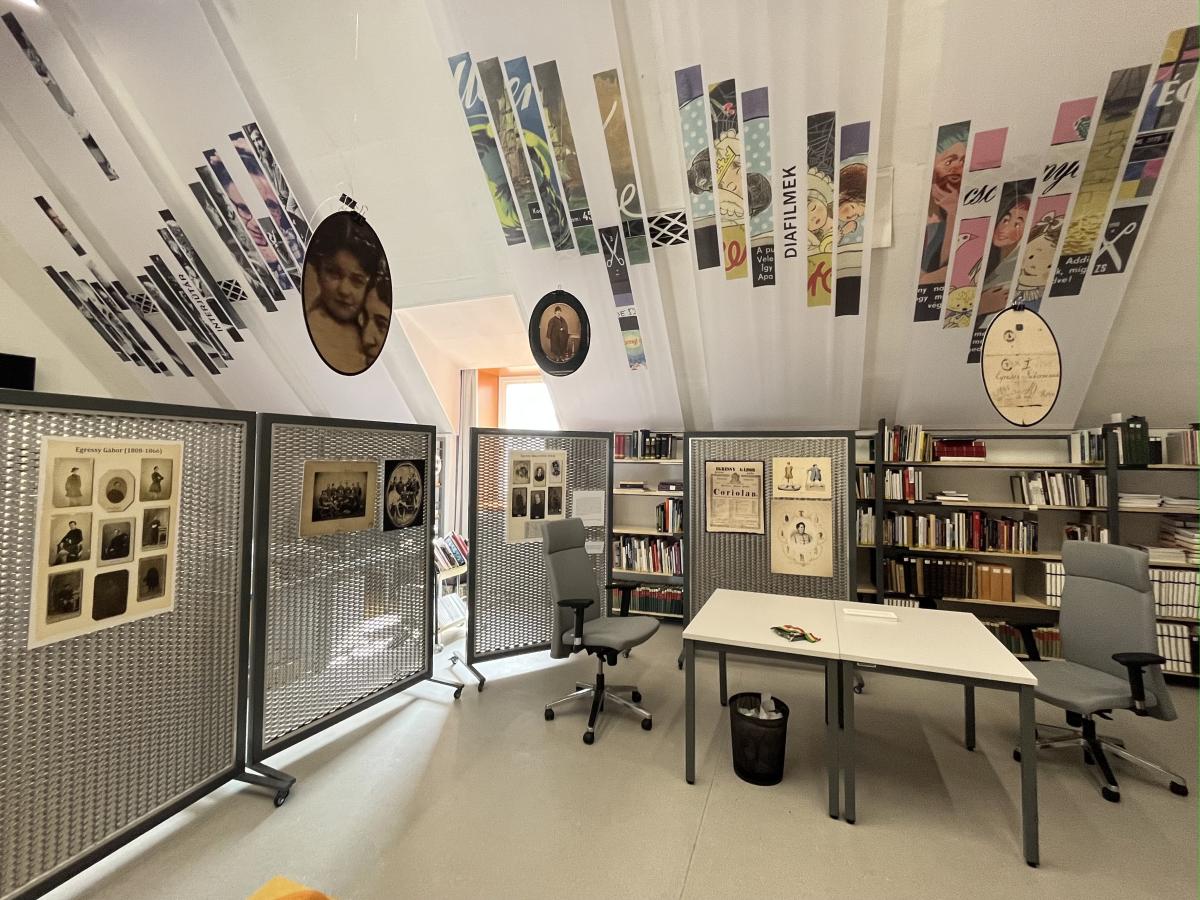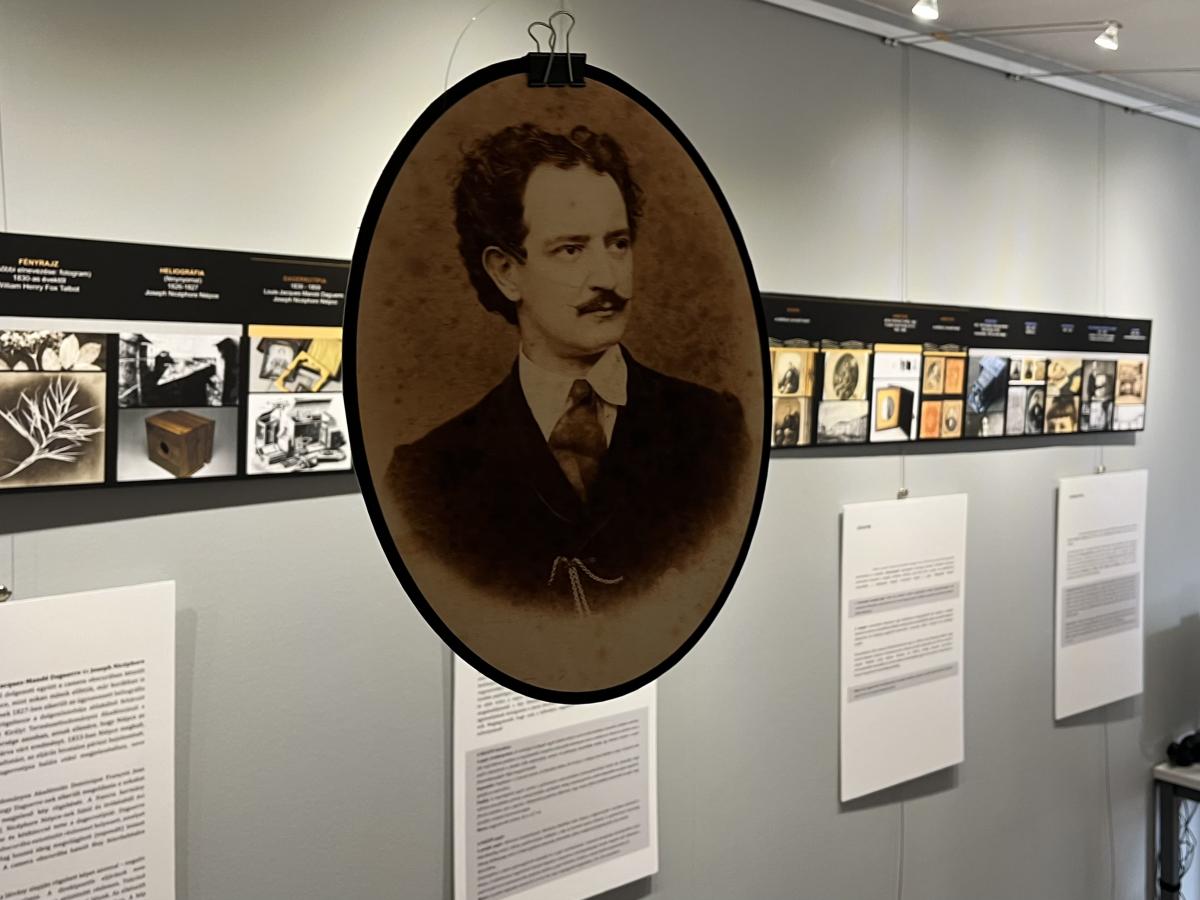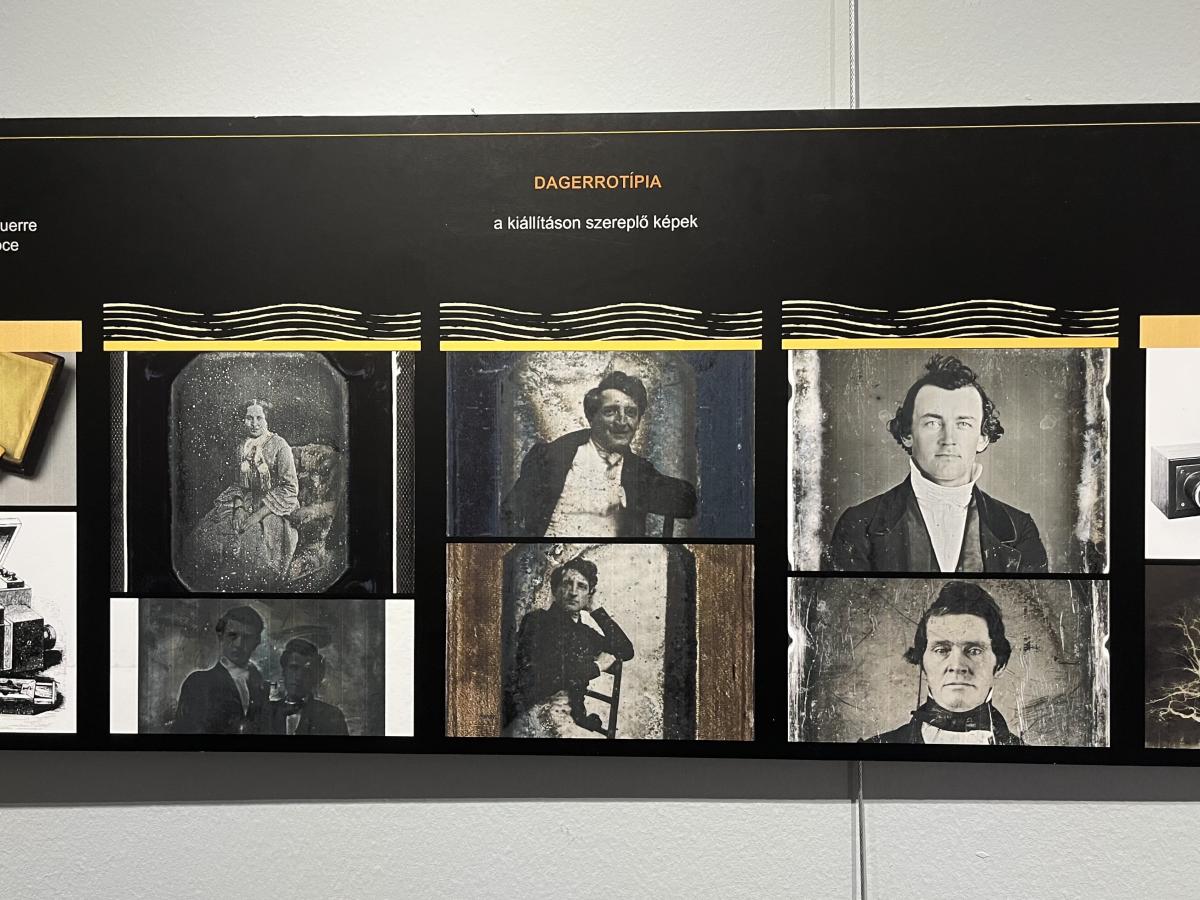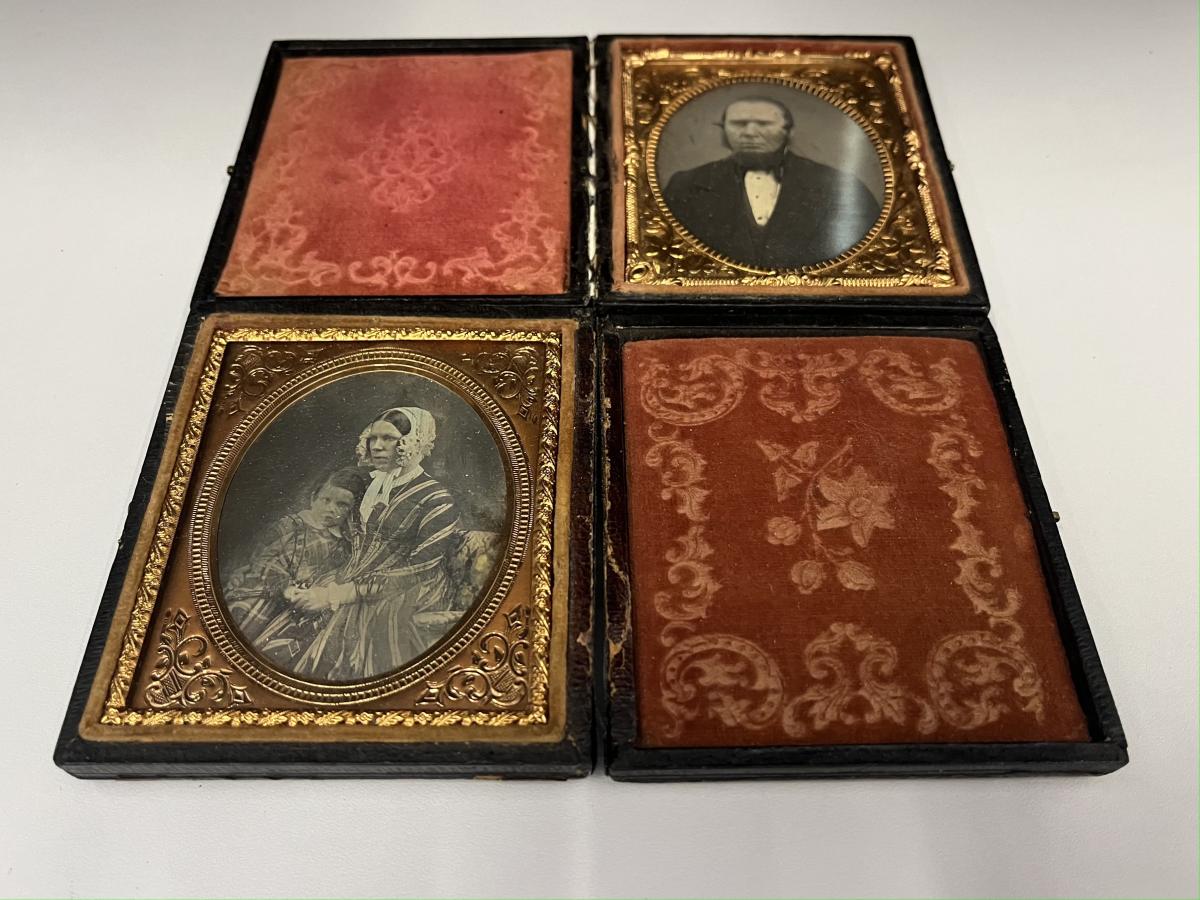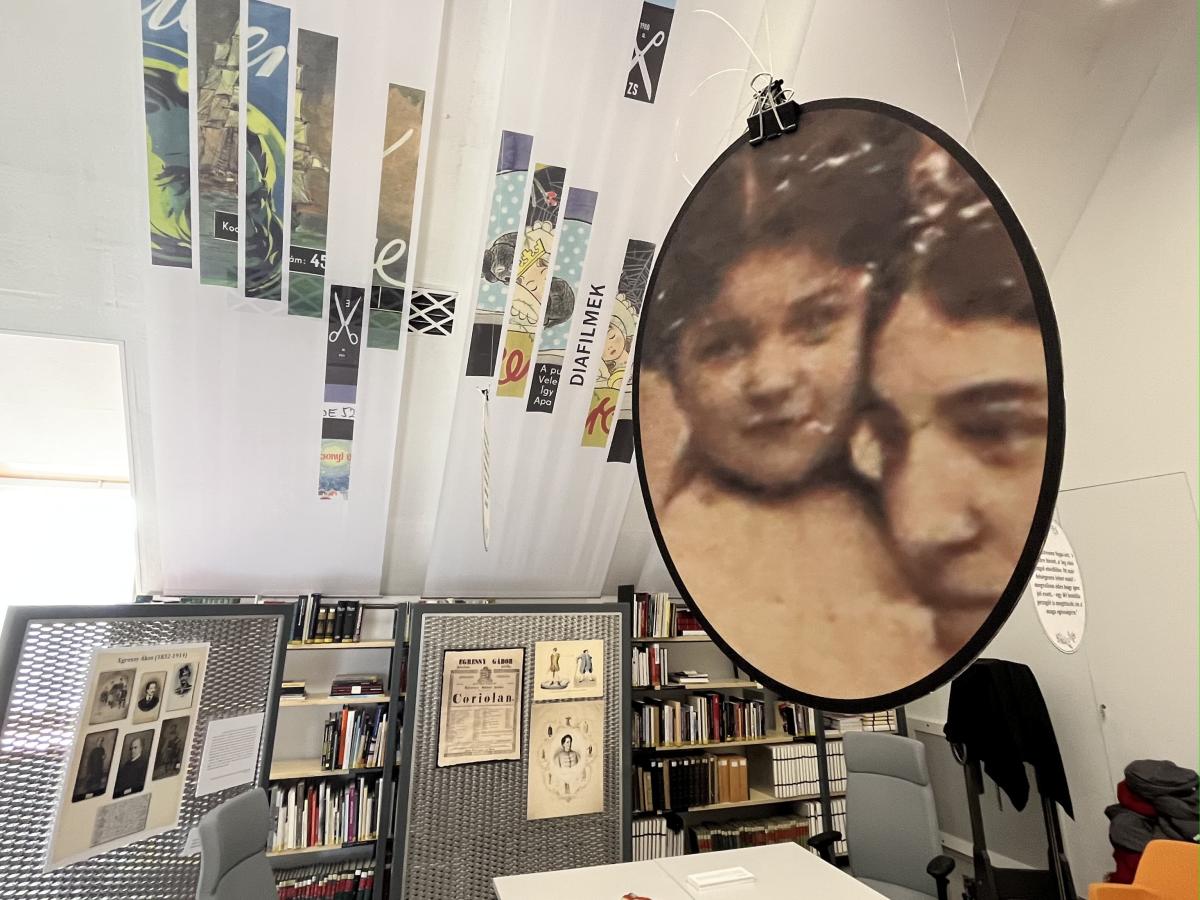
The beginnings of Hungarian portrait photography in the 1840–50s
The exhibition, which will be open until 14 June 2024, will not only showcase the special technique photographs in the collection, but also briefly explore the era of experimentation, the way photography has evolved from the camera obscura to the mass-produced cabinet card.
The temporary exhibition is open free of charge until 14 June 2024.
Opening hours:
Tuesday–Thursday 10.00–18.00
Friday 9.00–19.00
Monday and Saturday closed
Location: 7th floor, Chapel Space – research room of the Historical Photo and Interview Collection
The National Széchényi Library preserves many valuable images from the early days of photography, which were taken with special techniques that are little known today – this was an era of experimentation.
The earliest images in the library's possession are daguerreotypes. The two photographs of Gábor Egressy have a special ideological value, as he was an important figure in the 1848 revolution. The exhibition includes not only these, but also a dual portrait of Gábor Egressy's sons, Ákos and Árpád, and a rare daguerreotype, the only surviving print from Zsigmond Reisner's studio.
Experimental scientists, as well as pharmacists, opticians and jewellers, have also taken up photography. Other long-established methods of capturing reality, such as oil and watercolour painting, were occasionally mixed with photography, forming a transition between portraiture and the new techniques still to be discovered. Such salted paper photography includes the coloured portrait of Mátyás Pöltl, the innkeeper, the Unknown Man and the coloured portrait of Gyula Bulyovszky.
The new medium continued the tradition of portrait painting, with a number of professional painters becoming photographers: the best known of these are Jakab Marastoni, György Mayer and Lajos Kawalky.
Later, in the second half of the 19th century, "traditional" fine art gradually separated from portraiture, which seemed to require less and less artistic inspiration and shifted to an assembly-line production.
In the first period, photography meant mainly portraiture, although we also know still lifes, interior and exterior shots, but much less than portraiture. One of the rare exceptions is the enlarged photograph of the main square of Banská Bystrica on salt paper from 1850, which is on show in the exhibition.
Our Fotótér service gives you the freedom to browse our collection of portraits,
which includes more than a thousand photo rarities published
on the occasion of the national holiday.


